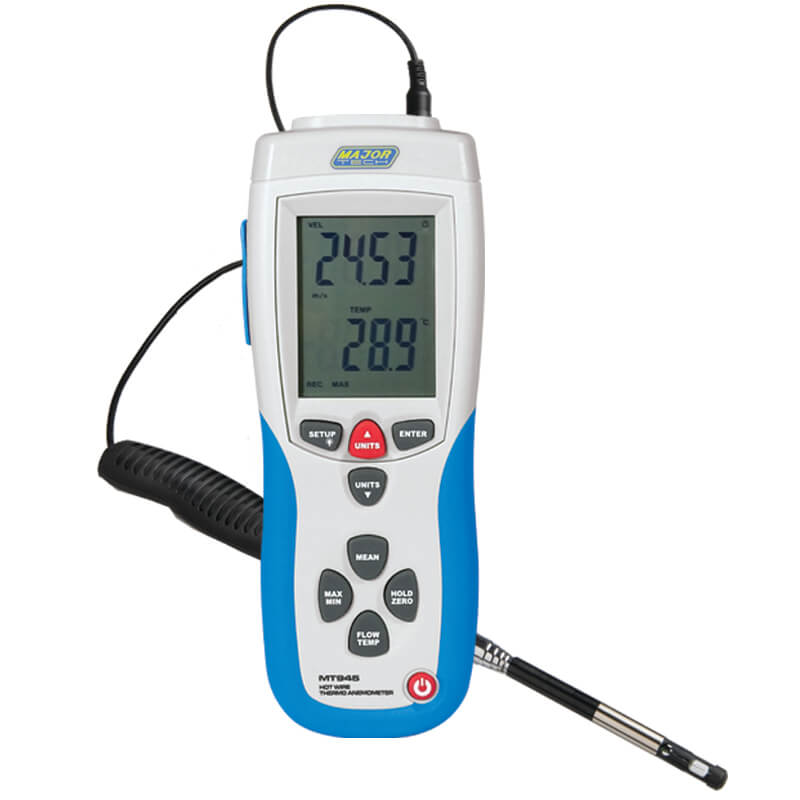Contrasting Digital and Mechanical Anemometers: Which is Right for You?
Exploring the Functions and Advantages of Anemometers for Weather Condition Lovers and Experts
From mug anemometers to sonic anemometers, each type brings its one-of-a-kind set of applications and benefits, losing light on different aspects of atmospheric conditions. As we delve right into the features and advantages of anemometers, a deeper understanding emerges not only of dominating climate phenomena however also of the wider implications for fields like wind power production and ecological research study.
Importance of Anemometers in Climate Tracking
Anemometers play a critical function in weather condition surveillance by giving exact dimensions of wind rate, helping in forecasting and understanding weather patterns. These tools, ranging from standard cup anemometers to modern ultrasonic anemometers, are essential for meteorologists, researchers, and climate lovers alike. By determining wind speed, anemometers help in figuring out the intensity of weather phenomena such as cyclones, storms, and tornadoes. In addition, they offer valuable information for aeronautics, maritime operations, and various industries that are sensitive to wind conditions.

Kinds Of Anemometers and Their Applications
The most common types of anemometers consist of cup anemometers, vane anemometers, hot-wire anemometers, and ultrasonic anemometers. Mug anemometers consist of 3 or four cups placed on horizontal arms that revolve with the wind, measuring its speed. Vane anemometers, on the various other hand, use a freely revolving vane to line up with the wind direction, offering both wind rate and instructions dimensions.
Each sort of anemometer has its distinct benefits and applications. Mug anemometers are ideal and robust for general climate monitoring, while vane anemometers are favored for directional dimensions. Hot-wire anemometers are sensitive to low air rates, making them perfect for indoor settings. Ultrasonic anemometers are non-intrusive and supply high precision, usually utilized in research study and specialized weather surveillance applications. Recognizing the features and applications of each sort of anemometer is crucial for selecting one of the most ideal instrument for certain weather condition checking demands.
Benefits of Using Anemometers in Projecting
In meteorology, the use of anemometers offers invaluable advantages for enhancing the accuracy of weather condition projecting. Anemometers determine wind rate and instructions, giving vital data for anticipating weather patterns. By integrating wind information into forecasting models, meteorologists can much better comprehend the motion of weather systems, anticipate modifications in click to read atmospheric conditions, and issue much more specific projections.
Additionally, anemometers play a vital role in examining potential weather dangers. Monitoring wind speeds aids forecasters predict extreme weather events such as cyclones, tornadoes, and winter months tornados with greater precision. This very early warning system allows authorities to provide prompt signals and apply necessary precaution, lowering the threats to life and residential or commercial property.
Furthermore, anemometers help in optimizing renewable power production. By assessing wind patterns, meteorologists can recognize appropriate areas for wind ranches and anticipate energy outcome, adding to the effective generation of wind power.

Anemometers in Wind Energy Manufacturing
Offered the essential role anemometers play in giving accurate wind information for weather condition forecasting and threat assessment, their significance reaches the world of wind energy manufacturing. Anemometers are essential instruments in the field of wind power, where the measurement of wind speed and instructions is important for determining the expediency and efficiency of wind generator installations. By accurately determining wind speeds at differing elevations, anemometers assist maximize the placement and design of wind generators to maximize power output.
In wind farms, anemometers are strategically positioned to accumulate real-time wind information that is made use of to evaluate the prospective power production of a website. This information is instrumental in determining the economic practicality of wind energy tasks and in forecasting power generation to guarantee grid stability. Additionally, anemometers help in keeping track of wind problems to enhance generator visit this page performance, avoid damages from high winds, and make certain the safety and security of personnel operating in the area of wind turbines.
Enhancing Weather Condition Recognizing With Anemometers

Anemometers play a vital role in enhancing our understanding of microclimates. These localized weather condition conditions can differ substantially from wider regional projections, making it important to have accurate information for particular areas. anemometer. By strategically placing anemometers in numerous areas, researchers can collect comprehensive info on just how wind acts in different surfaces, urban settings, or bodies of water
Additionally, anemometers add to enhancing weather condition projecting versions by offering real-time information on wind habits. This info is specifically important for forecasting serious weather condition events, maximizing agricultural practices, and sustaining industries like aviation and maritime navigating. Overall, anemometers are invaluable instruments that enable us to dig deeper right into the complexities of weather systems, inevitably causing more exact predictions and better-informed choices.
Final Thought
In verdict, anemometers play an important role in weather monitoring and forecasting by measuring wind speed and direction. Anemometers additionally have applications in wind energy manufacturing, additional highlighting their value in both meteorology and eco-friendly energy fields.
From cup anemometers to sonic anemometers, each type brings its unique collection of applications and advantages, shedding light on different aspects of climatic problems. These instruments, ranging from typical mug anemometers to modern-day ultrasonic anemometers, are crucial for meteorologists, researchers, and climate fanatics alike. The most typical types of anemometers include cup anemometers, vane anemometers, hot-wire anemometers, and ultrasonic anemometers. Mug anemometers are ideal and durable for basic weather monitoring, while vane anemometers are preferred for directional measurements. Anemometers are crucial instruments in the area of wind Discover More power, where the measurement of wind rate and instructions is crucial for identifying the expediency and effectiveness of wind turbine installments.